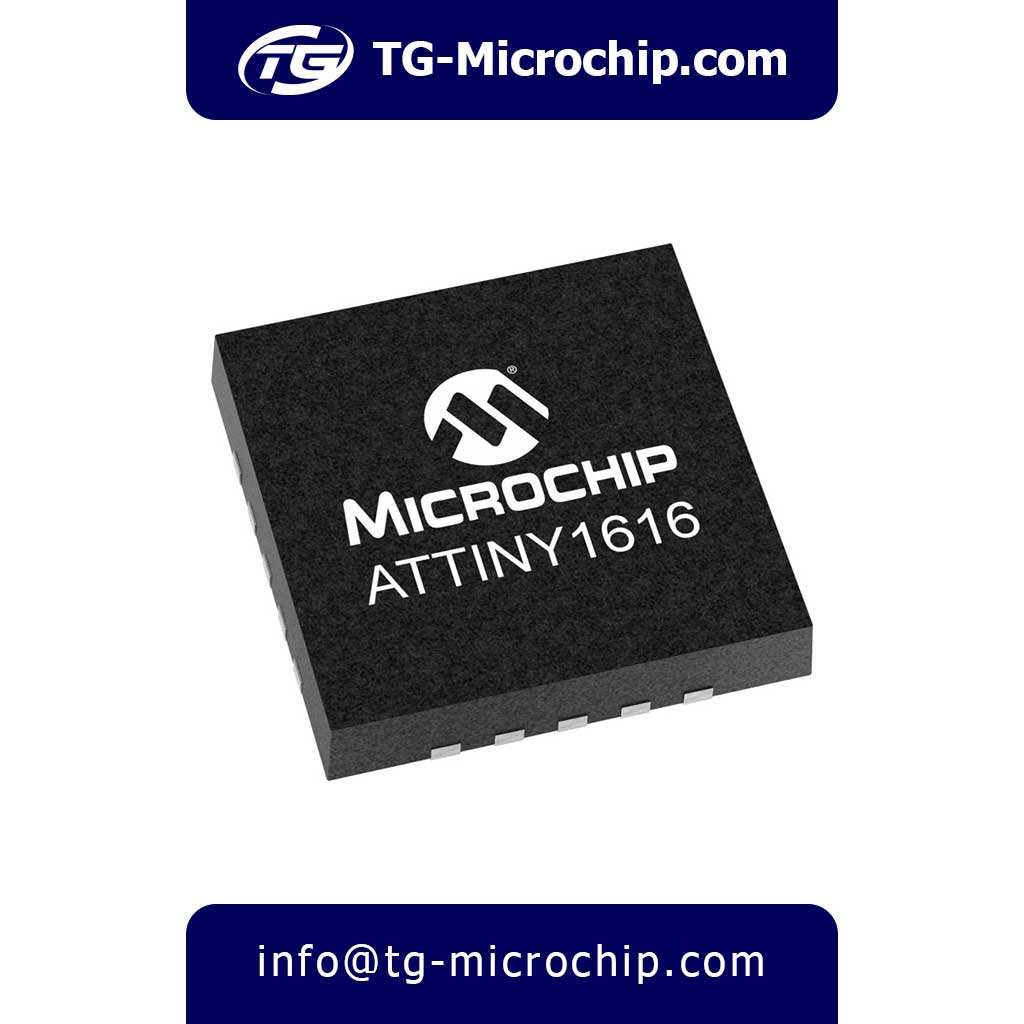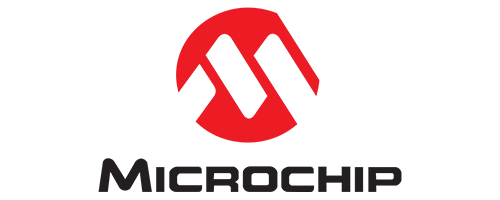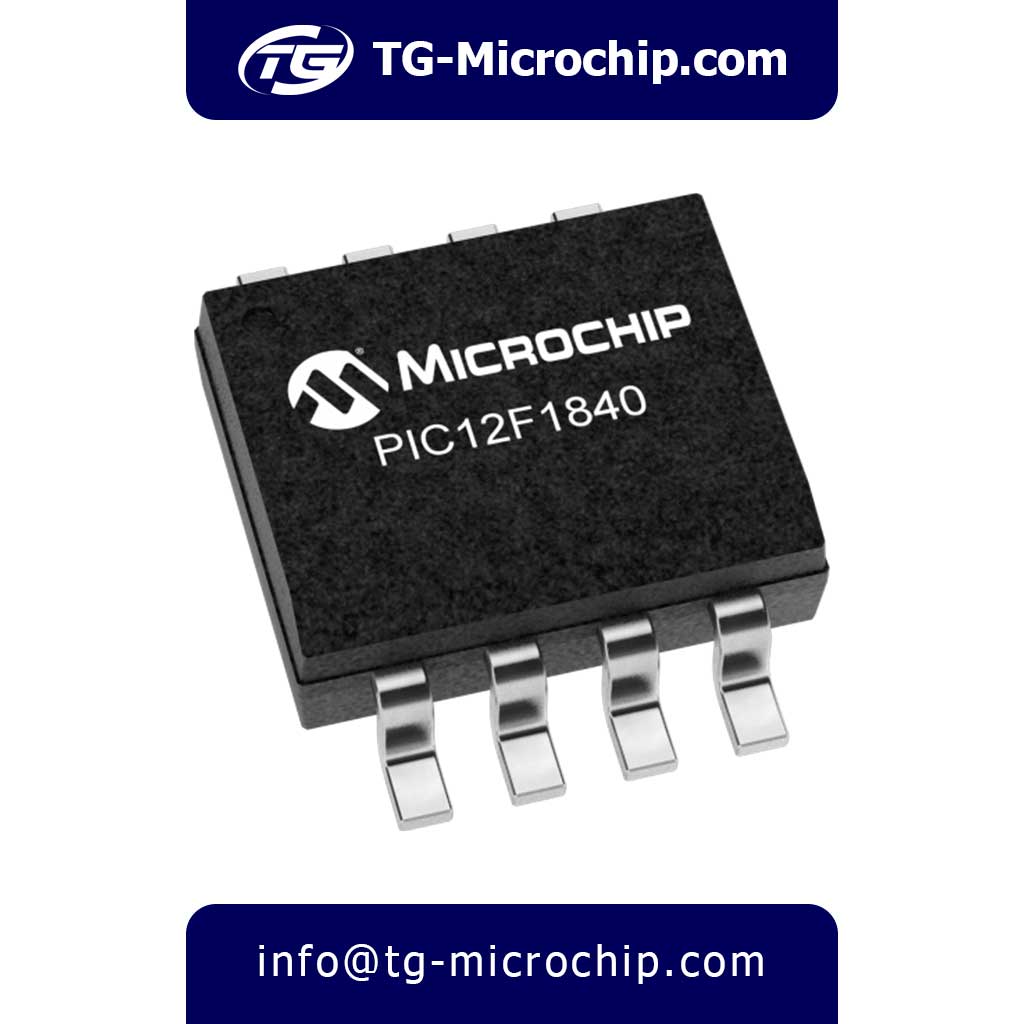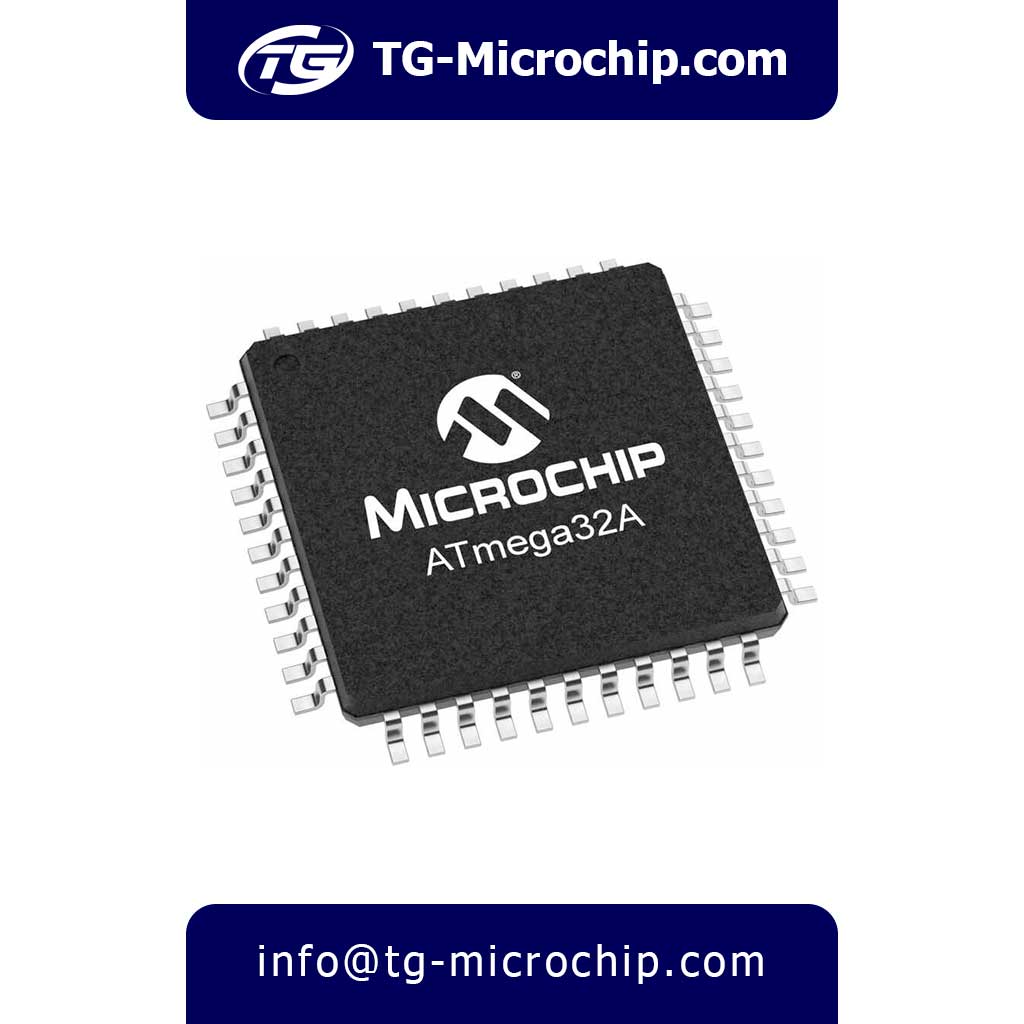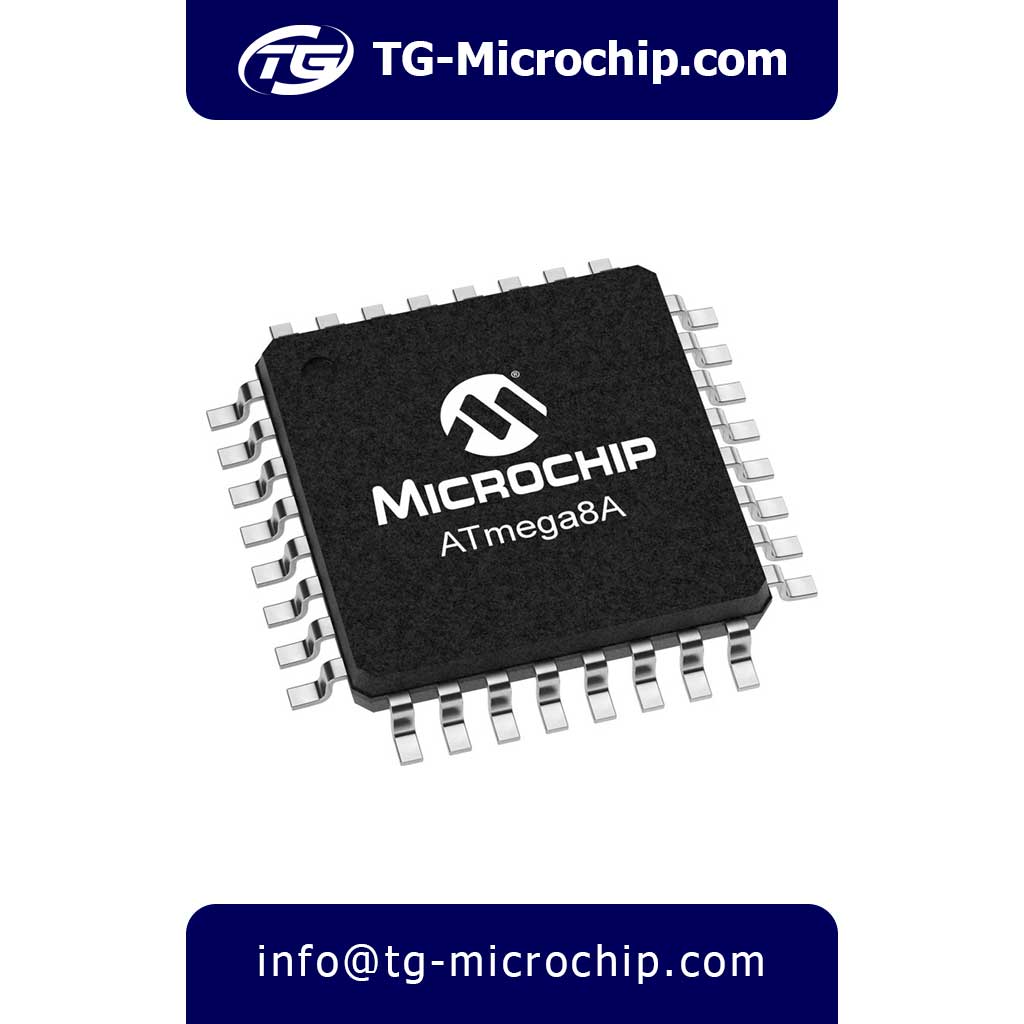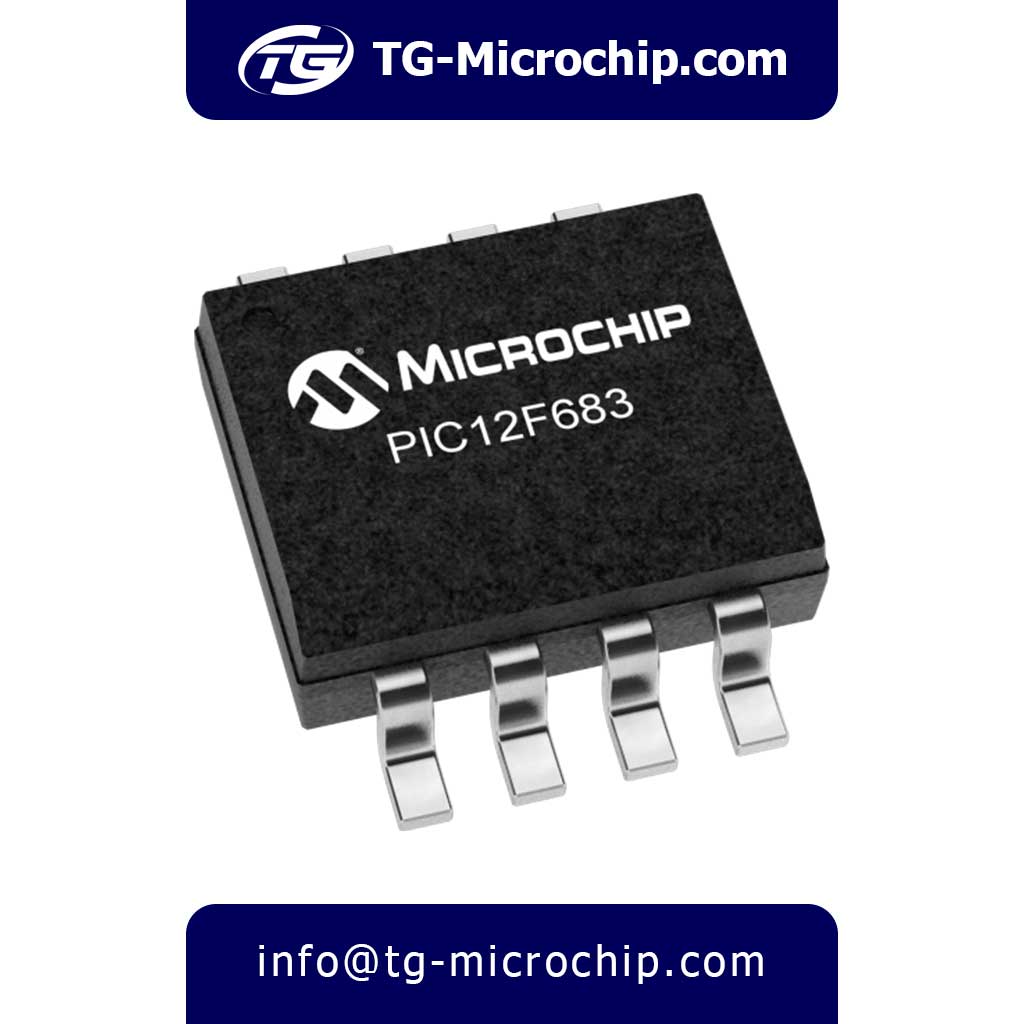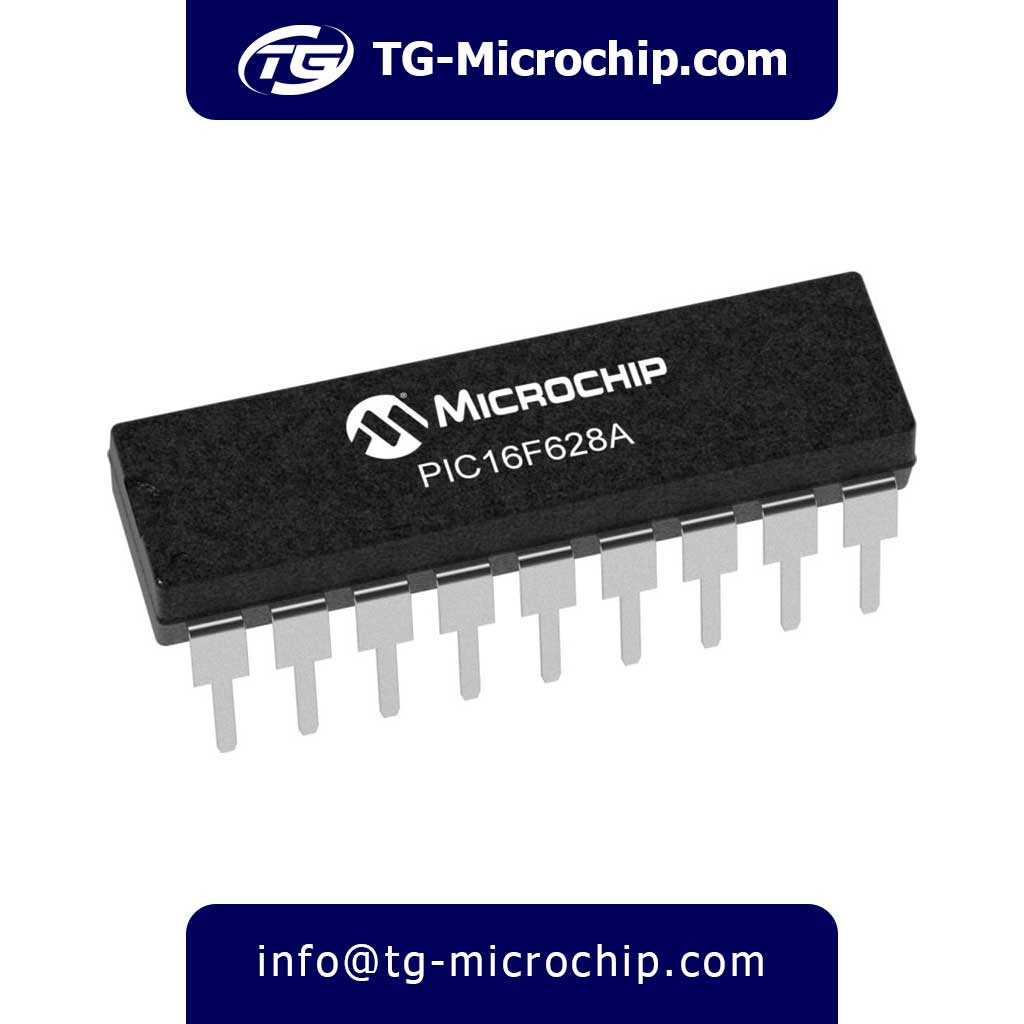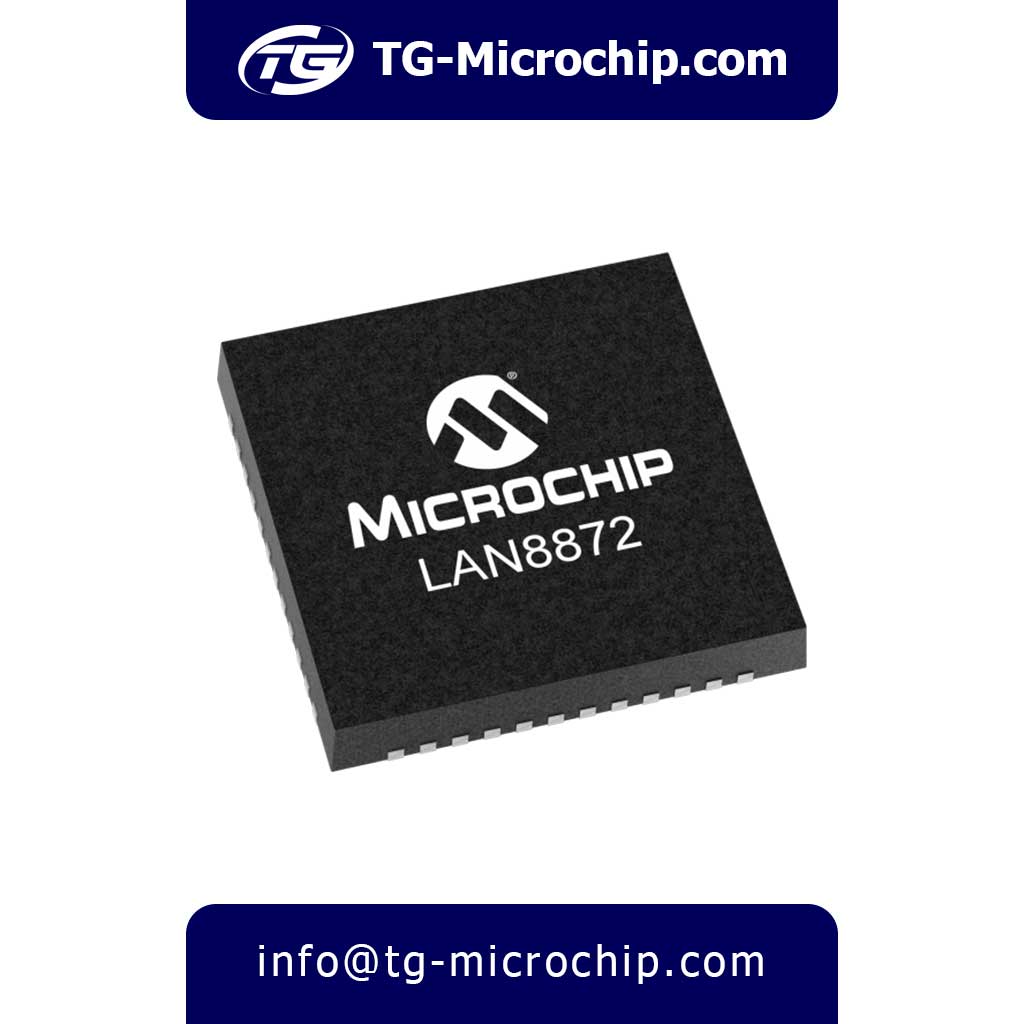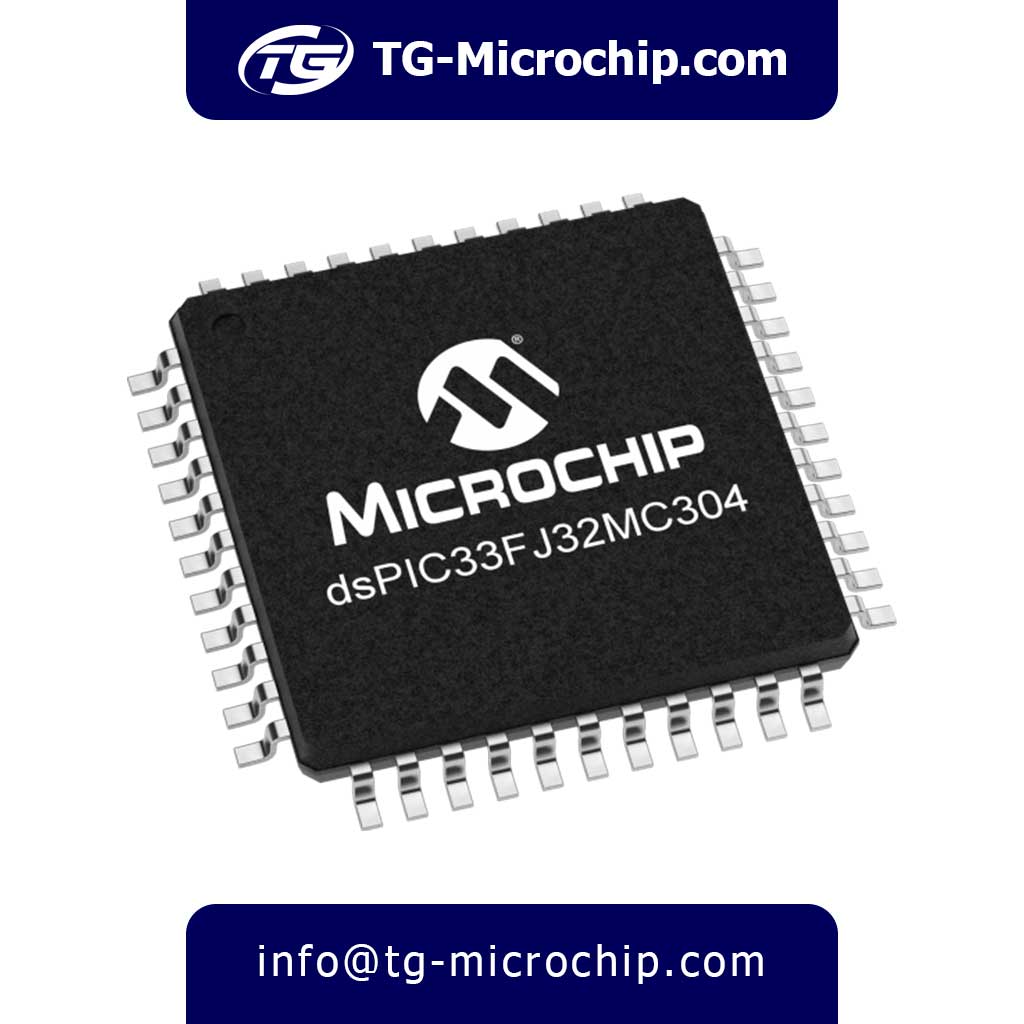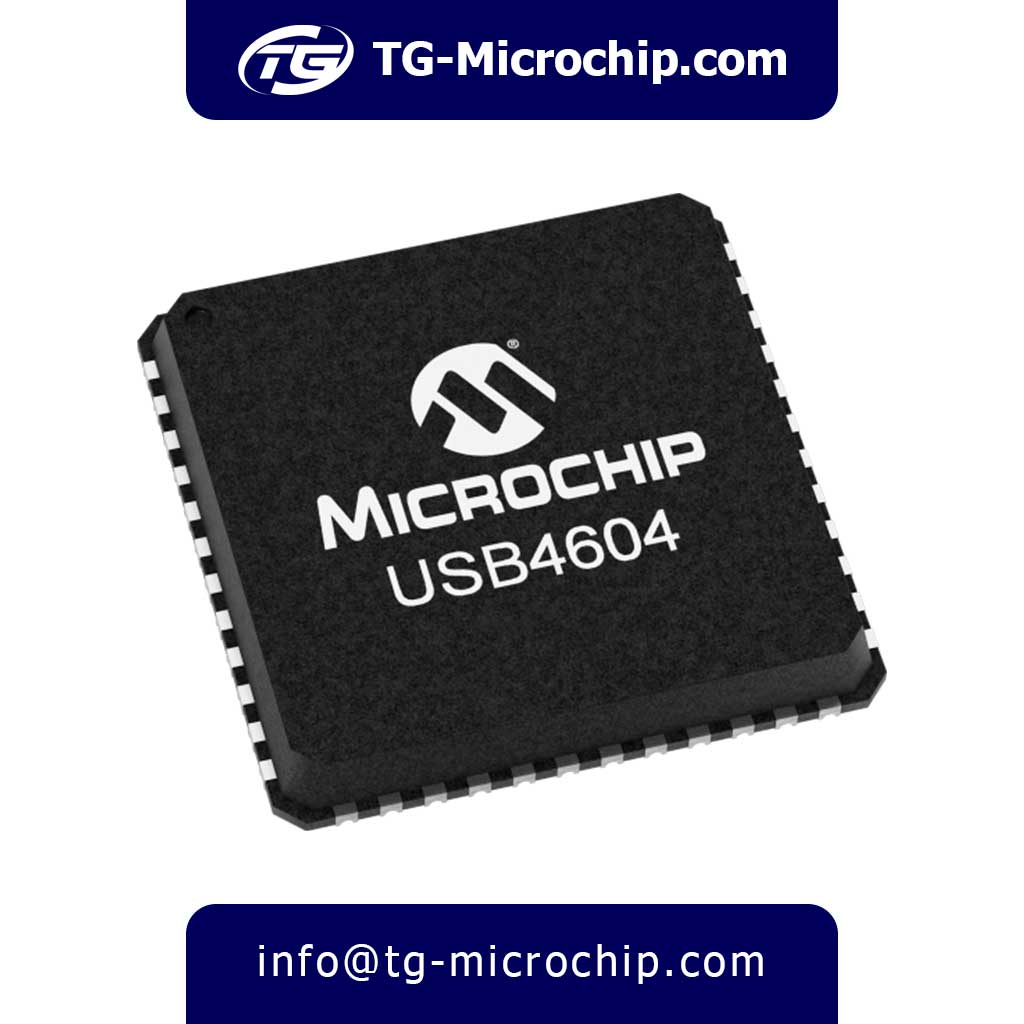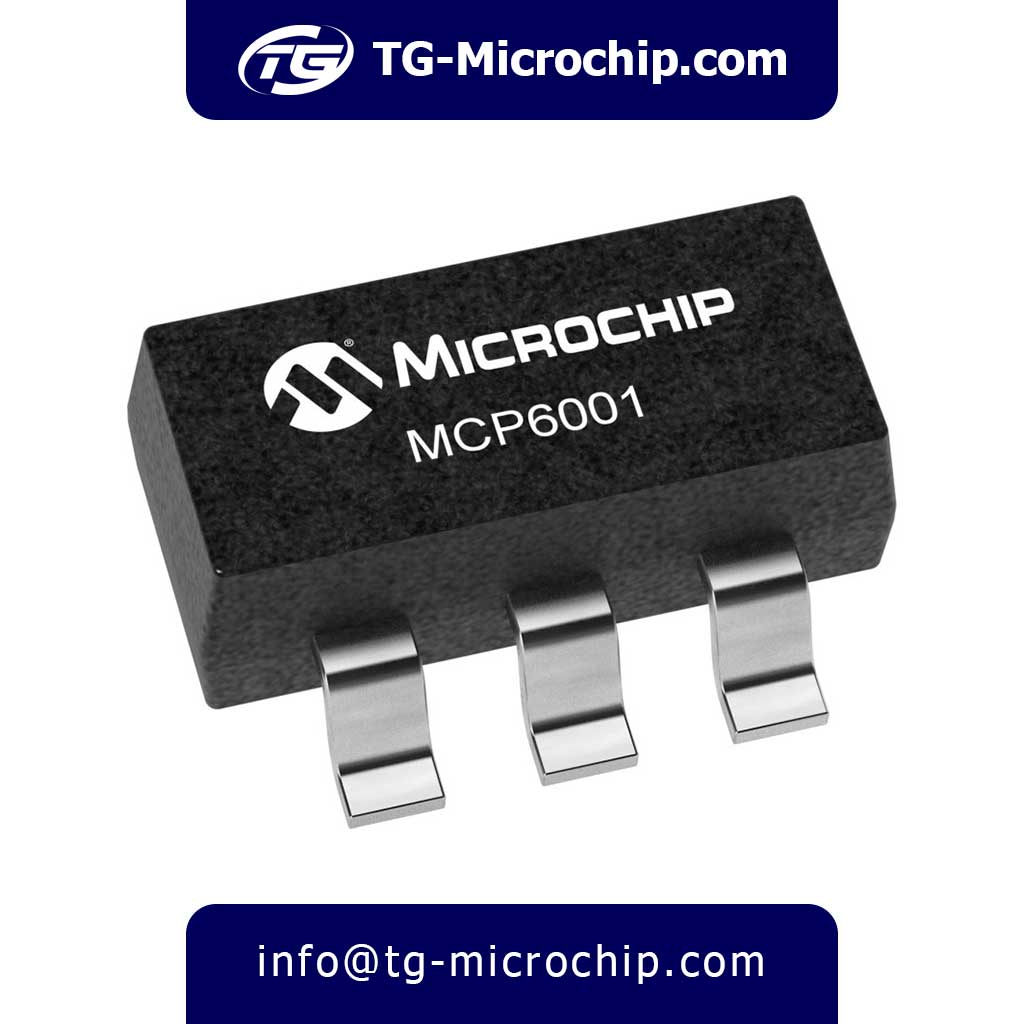For order or price inquiry of ATTINY1616-MFR Microchip Technology – 8-bit Microcontroller – MCU Please click on Buy Order button and fill the RFQ form we will check out inventory and offer you our best price .
Quick Access
Specifications
| Part Number | ATTINY1616-MFR |
| Series | ATtiny Series |
| Product Category | Microcontrollers |
| Product Type | 8-bit Microcontroller |
| Packaging | QFN-20 |
| Architecture | 8-bit AVR |
| Operating Voltage | 1.8V to 5.5V |
| Maximum Clock Frequency | 20 MHz |
| Flash Memory | 16 KB |
| SRAM | 2 KB |
| EEPROM | 256 Bytes |
| Number of I/O Pins | 18 |
| ADC | 12-bit, 10 channels |
| ADC Resolution | 12-bit |
| Timers | 6 x 16-bit Timer/Counter |
| PWM | 4 channels (8-bit) |
| Communication Interfaces | – USART |
| – SPI | |
| – I2C | |
| Interrupts | 24 external interrupts |
| Watchdog Timer | Yes |
| Operating Temperature Range | -40°C to +125°C |
| Minimum Operating Temperature | -40°C |
| Maximum Operating Temperature | +125°C |
| Development Tools | – Atmel Studio |
| – MPLAB X IDE | |
| – Microchip Studio | |
| Debugging Interface | UPDI (Unified Program and Debug Interface) |
| Power Consumption | – Active: 12 mA at 20 MHz |
| – Sleep: 0.1 µA (typical) | |
| GPIO | Configurable as input or output |
| Brown-out Detection | Yes |
| Pin Count | 20 pins |
| Dimensions | 3 mm x 3 mm (QFN-20) |
| Weight | Approximately 0.1 grams |
| RoHS Compliant | Yes |
| Applications | – Consumer electronics |
| – Industrial control | |
| – Automotive applications | |
| – IoT devices |
About
The ATTINY1616-MFR is a versatile 8-bit microcontroller from Microchip Technology, designed to meet the demands of a wide range of embedded applications. Part of the ATtiny series, this microcontroller is housed in a compact QFN-20 package, making it an ideal choice for space-constrained designs. With an operating voltage range of 1.8V to 5.5V and a maximum clock frequency of 20 MHz, the ATTINY1616-MFR is well-suited for low-power applications while still delivering robust performance.
One of the standout features of the ATTINY1616-MFR is its generous memory architecture, which includes 16 KB of Flash memory, 2 KB of SRAM, and 256 bytes of EEPROM. This memory capacity allows developers to implement complex algorithms and store necessary data efficiently. The microcontroller also supports a variety of peripherals, including a 12-bit ADC with 10 channels, six 16-bit timers, and four PWM channels, enabling precise control and measurement capabilities in various applications.
In terms of connectivity, the ATTINY1616-MFR offers multiple communication interfaces, including USART, SPI, and I2C, facilitating seamless integration with other devices and systems. The microcontroller is equipped with 18 I/O pins, which can be configured as either inputs or outputs, providing flexibility for interfacing with sensors, actuators, and other components. Additionally, it supports 24 external interrupts, enhancing its responsiveness to real-time events.
The ATTINY1616-MFR is designed for reliability and durability, with an operating temperature range of -40°C to +125°C, making it suitable for harsh environments. It also features a built-in watchdog timer and brown-out detection, ensuring system stability and safety. With its combination of performance, memory capacity, and extensive peripheral support, the ATTINY1616-MFR is an excellent choice for applications in consumer electronics, industrial control, automotive systems, and the Internet of Things (IoT).
Key Features
- 8-bit AVR Architecture: The ATTINY1616-MFR is built on the efficient 8-bit AVR architecture, which provides a balance of performance and power efficiency, making it suitable for low-power applications.
- Memory Capacity: It includes 16 KB of Flash memory for program storage, 2 KB of SRAM for data processing, and 256 bytes of EEPROM for non-volatile data storage, allowing for complex applications and data retention.
- High-Speed Operation: The microcontroller can operate at a maximum clock frequency of 20 MHz, enabling fast processing and responsiveness in real-time applications.
- Analog-to-Digital Converter (ADC): The integrated 12-bit ADC features 10 channels, allowing for precise analog signal measurement, which is essential for applications that require sensor interfacing.
- Timers and PWM: The ATTINY1616-MFR includes six 16-bit timers/counters and four PWM channels, providing robust timing and control capabilities for various applications, such as motor control and signal generation.
- Flexible I/O Configuration: With 18 I/O pins, the microcontroller allows for flexible configuration as either inputs or outputs, facilitating easy interfacing with a wide range of peripherals, sensors, and actuators.
- Communication Interfaces: It supports multiple communication protocols, including USART, SPI, and I2C, enabling seamless integration with other devices and systems for data exchange and control.
- Interrupt Handling: The microcontroller features 24 external interrupts, enhancing its ability to respond quickly to real-time events and improving overall system responsiveness.
- Power Management: Designed for low power consumption, the ATTINY1616-MFR operates efficiently, with active current consumption of 12 mA at 20 MHz and a sleep mode current of just 0.1 µA, making it ideal for battery-powered applications.
- Robust Operating Conditions: The microcontroller operates over a wide temperature range of -40°C to +125°C, ensuring reliability in harsh environments. It also includes features like a watchdog timer and brown-out detection for enhanced system stability and safety.
- Development Support: The ATTINY1616-MFR is compatible with various development tools, including Atmel Studio, MPLAB X IDE, and Microchip Studio, providing developers with a comprehensive environment for programming and debugging.
Applications
- Consumer Electronics: The microcontroller is ideal for various consumer electronic devices, such as remote controls, smart home appliances, and wearable technology. Its low power consumption and compact size make it suitable for battery-operated devices.
- Industrial Control Systems: The ATTINY1616-MFR can be used in industrial automation and control applications, including motor control, sensor monitoring, and data acquisition systems. Its multiple I/O pins and communication interfaces allow for easy integration with sensors and actuators.
- Automotive Applications: This microcontroller is well-suited for automotive applications, such as body control modules, lighting control, and dashboard instrumentation. Its wide operating temperature range ensures reliable performance in harsh automotive environments.
- Internet of Things (IoT): The ATTINY1616-MFR is a great choice for IoT devices, enabling connectivity and data processing in smart devices. Its communication interfaces (USART, SPI, I2C) facilitate seamless integration with other IoT components and cloud services.
- Home Automation: The microcontroller can be employed in home automation systems for controlling lighting, heating, and security systems. Its ability to handle multiple sensors and actuators makes it a versatile solution for smart home applications.
- Medical Devices: The ATTINY1616-MFR can be used in portable medical devices for monitoring and data collection. Its low power consumption and compact form factor are advantageous for battery-operated medical equipment.
- Robotics: In robotics applications, the microcontroller can be used for controlling motors, sensors, and communication between different robotic components, making it suitable for both hobbyist and professional robotics projects.
- Educational Projects: The ATTINY1616-MFR is also popular in educational settings for teaching embedded systems and microcontroller programming. Its ease of use and availability of development tools make it an excellent choice for students and hobbyists.
Advantages
- Compact Size: Housed in a QFN-20 package, the ATTINY1616-MFR is designed for space-constrained applications. Its small footprint allows for easy integration into compact designs, making it ideal for portable and wearable devices.
- Low Power Consumption: The microcontroller is optimized for low power operation, with an active current consumption of just 12 mA at 20 MHz and a sleep mode current of only 0.1 µA. This makes it suitable for battery-powered applications, extending the life of devices without frequent recharging or battery replacement.
- Versatile Memory Options: With 16 KB of Flash memory, 2 KB of SRAM, and 256 bytes of EEPROM, the ATTINY1616-MFR provides ample memory for complex applications. This flexibility allows developers to implement sophisticated algorithms and store necessary data efficiently.
- Rich Peripheral Set: The microcontroller features a comprehensive set of peripherals, including a 12-bit ADC with 10 channels, six 16-bit timers, and four PWM channels. This rich feature set enables precise control and measurement capabilities, making it suitable for a wide range of applications.
- Multiple Communication Interfaces: The ATTINY1616-MFR supports various communication protocols, including USART, SPI, and I2C. This versatility allows for seamless integration with other devices and systems, facilitating data exchange and control in complex applications.
- Robust Operating Conditions: With an operating temperature range of -40°C to +125°C, the microcontroller is designed to perform reliably in harsh environments. This durability makes it suitable for industrial and automotive applications where temperature extremes are common.
- Extensive Interrupt Handling: The microcontroller supports 24 external interrupts, enhancing its ability to respond quickly to real-time events. This feature is particularly beneficial in applications requiring immediate action based on sensor inputs or user interactions.
- Development Support: The ATTINY1616-MFR is compatible with a variety of development tools, including Atmel Studio, MPLAB X IDE, and Microchip Studio. This support provides developers with a comprehensive environment for programming, debugging, and optimizing their applications.
- Cost-Effective Solution: As part of the ATtiny series, the ATTINY1616-MFR offers a cost-effective solution for embedded applications without compromising on performance or features. This makes it an attractive option for both hobbyists and professional developers.
- Wide Range of Applications: The combination of its features and advantages makes the ATTINY1616-MFR suitable for diverse applications, including consumer electronics, industrial control, automotive systems, IoT devices, and more.
- Enhanced Performance: The 20 MHz maximum clock frequency allows for efficient processing of tasks, enabling the microcontroller to handle complex computations and real-time operations effectively. This performance is particularly beneficial in applications requiring quick response times.
- Flexible I/O Configuration: With 18 I/O pins that can be configured as either inputs or outputs, the ATTINY1616-MFR provides significant flexibility for interfacing with a variety of sensors, actuators, and other peripherals. This adaptability simplifies design and implementation in diverse applications.
- Integrated Analog Features: The inclusion of a 12-bit ADC with multiple channels allows for high-resolution analog signal processing. This feature is essential for applications that require accurate sensor readings, such as temperature, pressure, and light sensors.
- PWM Capabilities: The four PWM channels enable precise control of motors and other devices that require variable speed or intensity. This capability is particularly useful in applications such as robotics, lighting control, and motor drivers.
- Watchdog Timer: The built-in watchdog timer enhances system reliability by resetting the microcontroller in case of software malfunctions or unexpected behavior. This feature is crucial for applications where continuous operation is essential, such as in industrial automation.
- Brown-out Detection: The brown-out detection feature helps prevent the microcontroller from operating under insufficient voltage conditions, which can lead to erratic behavior. This safety feature ensures that the system remains stable and reliable, particularly in battery-operated devices.
- Ease of Prototyping: The availability of development tools and resources, including example projects and libraries, makes it easier for developers to prototype and test their applications. This support accelerates the development process and reduces time-to-market.
- Community and Ecosystem Support: Being part of the ATtiny family, the ATTINY1616-MFR benefits from a large community of developers and extensive documentation. This ecosystem provides valuable resources, forums, and shared knowledge, making it easier for new users to get started and for experienced developers to find solutions to complex problems.
- Scalability: The microcontroller’s features and performance make it suitable for both simple and complex applications. Developers can start with basic projects and scale up to more sophisticated designs without needing to switch to a different microcontroller family.
- Environmental Compliance: The ATTINY1616-MFR is RoHS compliant, ensuring that it meets environmental regulations regarding hazardous substances. This compliance is increasingly important for manufacturers looking to produce environmentally friendly products.
Comparison with Similar Components
1. ATTINY1616-MFR vs. ATTINY841
| Feature | ATTINY1616-MFR | ATTINY841 |
|---|---|---|
| Architecture | 8-bit AVR | 8-bit AVR |
| Flash Memory | 16 KB | 8 KB |
| SRAM | 2 KB | 512 Bytes |
| EEPROM | 256 Bytes | 512 Bytes |
| I/O Pins | 18 | 12 |
| ADC | 12-bit, 10 channels | 10-bit, 8 channels |
| Timers | 6 x 16-bit | 2 x 8-bit |
| PWM | 4 channels (8-bit) | 4 channels (8-bit) |
| Max Clock Frequency | 20 MHz | 20 MHz |
| Operating Voltage | 1.8V to 5.5V | 1.8V to 5.5V |
| Power Consumption | Active: 12 mA, Sleep: 0.1 µA | Active: 10 mA, Sleep: 0.1 µA |
| Applications | Consumer electronics, IoT, industrial | Simple control applications, hobby projects |
2. ATTINY1616-MFR vs. PIC16F1847
| Feature | ATTINY1616-MFR | PIC16F1847 |
|---|---|---|
| Architecture | 8-bit AVR | 8-bit PIC |
| Flash Memory | 16 KB | 14 KB |
| SRAM | 2 KB | 768 Bytes |
| EEPROM | 256 Bytes | 256 Bytes |
| I/O Pins | 18 | 18 |
| ADC | 12-bit, 10 channels | 10-bit, 12 channels |
| Timers | 6 x 16-bit | 3 x 8-bit |
| PWM | 4 channels (8-bit) | 2 channels (10-bit) |
| Max Clock Frequency | 20 MHz | 32 MHz |
| Operating Voltage | 1.8V to 5.5V | 2.0V to 5.5V |
| Power Consumption | Active: 12 mA, Sleep: 0.1 µA | Active: 20 mA, Sleep: 0.1 µA |
| Applications | Consumer electronics, IoT, industrial | Automotive, industrial control |
3. ATTINY1616-MFR vs. STM8S003F3
| Feature | ATTINY1616-MFR | STM8S003F3 |
|---|---|---|
| Architecture | 8-bit AVR | 8-bit STM8 |
| Flash Memory | 16 KB | 8 KB |
| SRAM | 2 KB | 1 KB |
| EEPROM | 256 Bytes | 128 Bytes |
| I/O Pins | 18 | 10 |
| ADC | 12-bit, 10 channels | 10-bit, 3 channels |
| Timers | 6 x 16-bit | 2 x 8-bit |
| PWM | 4 channels (8-bit) | 2 channels (8-bit) |
| Max Clock Frequency | 20 MHz | 16 MHz |
| Operating Voltage | 1.8V to 5.5V | 2.95V to 5.5V |
| Power Consumption | Active: 12 mA, Sleep: 0.1 µA | Active: 6 mA, Sleep: 1 µA |
| Applications | Consumer electronics, IoT, industrial | Home appliances, consumer electronics |
Summary of Comparisons
- Memory and Performance: The ATTINY1616-MFR generally offers more Flash memory and SRAM compared to similar microcontrollers, making it suitable for more complex applications.
- Peripheral Features: It has a richer set of peripherals, including more timers and a higher-resolution ADC, which enhances its capability for precise control and measurement.
- I/O Flexibility: With 18 I/O pins, the ATTINY1616-MFR provides greater flexibility for interfacing with various components compared to some of its counterparts.
- Power Efficiency: The power consumption is competitive, making it suitable for battery-operated devices, although some alternatives may offer lower active current consumption.
- Application Suitability: The ATTINY1616-MFR is well-suited for a wide range of applications, including IoT, consumer electronics, and industrial control, thanks to its robust feature set and reliability.
Conclusion
The ATTINY1616-MFR stands out among similar microcontrollers due to its combination of memory capacity, peripheral features, and flexibility, making it a strong choice for developers looking to create efficient and effective embedded solutions.
Frequently Asked Questions ( FAQs )
- What is the maximum clock frequency of the ATTINY1616-MFR?
- The ATTINY1616-MFR operates at a maximum clock frequency of 20 MHz, allowing for efficient processing of tasks in various applications.
- What is the operating voltage range for the ATTINY1616-MFR?
- The microcontroller operates within a voltage range of 1.8V to 5.5V, making it suitable for low-power applications and battery-operated devices.
- How much Flash memory does the ATTINY1616-MFR have?
- The ATTINY1616-MFR features 16 KB of Flash memory for program storage, which is sufficient for a wide range of applications.
- What types of communication interfaces are supported?
- The microcontroller supports multiple communication protocols, including USART, SPI, and I2C, facilitating easy integration with other devices and systems.
- How many I/O pins does the ATTINY1616-MFR have?
- The ATTINY1616-MFR has 18 I/O pins that can be configured as either inputs or outputs, providing flexibility for interfacing with various peripherals.
- What is the temperature range for the ATTINY1616-MFR?
- The microcontroller operates over a wide temperature range of -40°C to +125°C, ensuring reliable performance in harsh environments.
- Does the ATTINY1616-MFR have an integrated ADC?
- Yes, the ATTINY1616-MFR includes a 12-bit ADC with 10 channels, allowing for precise analog signal measurement.
- What are the power consumption characteristics of the ATTINY1616-MFR?
- The microcontroller has an active current consumption of 12 mA at 20 MHz and a sleep mode current of just 0.1 µA, making it ideal for low-power applications.
- Is there support for development tools?
- Yes, the ATTINY1616-MFR is compatible with various development tools, including Atmel Studio, MPLAB X IDE, and Microchip Studio, providing a comprehensive environment for programming and debugging.
- What applications is the ATTINY1616-MFR suitable for?
- The microcontroller is suitable for a wide range of applications, including consumer electronics, industrial control systems, automotive applications, IoT devices, home automation, medical devices, and robotics.
- Does the ATTINY1616-MFR have built-in safety features?
- Yes, it includes a watchdog timer for system reliability and brown-out detection to prevent operation under insufficient voltage conditions.
- Is the ATTINY1616-MFR RoHS compliant?
- Yes, the ATTINY1616-MFR is RoHS compliant, ensuring that it meets environmental regulations regarding hazardous substances.
- Can the ATTINY1616-MFR be used in educational projects?
- Yes! Its ease of use, availability of development tools, and extensive documentation make it an excellent choice for educational settings and hobbyist projects.
- What is the weight and size of the ATTINY1616-MFR?
- The microcontroller is housed in a QFN-20 package, measuring 3 mm x 3 mm, and weighs approximately 0.1 grams, making it suitable for compact designs.
- Where can I find more information about the ATTINY1616-MFR?
- For more detailed information, including technical specifications and application notes, you can refer to the official Microchip Technology datasheet for the ATTINY1616-MFR.
- What programming languages can be used to program the ATTINY1616-MFR?
- The ATTINY1616-MFR can be programmed using C/C++ with the help of development environments like Atmel Studio and MPLAB X IDE. Assembly language can also be used for low-level programming.
- What is the role of the UPDI interface?
- The UPDI (Unified Program and Debug Interface) is a single-wire programming and debugging interface that simplifies the process of programming and debugging the ATTINY1616-MFR. It allows for easy access to the microcontroller’s features during development.
- Can the ATTINY1616-MFR be used in battery-powered applications?
- Yes, the low power consumption characteristics of the ATTINY1616-MFR, along with its sleep mode, make it an excellent choice for battery-powered applications, extending battery life significantly.
- What types of sensors can be interfaced with the ATTINY1616-MFR?
- The microcontroller can interface with a wide variety of sensors, including temperature sensors, light sensors, pressure sensors, and motion detectors, thanks to its flexible I/O configuration and ADC capabilities.
- Is there a limit to the number of external interrupts?
- The ATTINY1616-MFR supports up to 24 external interrupts, allowing for responsive handling of multiple events and enhancing the microcontroller’s ability to manage real-time applications.
- What is the significance of the watchdog timer?
- The watchdog timer is a safety feature that resets the microcontroller if the software becomes unresponsive or enters an infinite loop. This ensures that the system can recover from faults and maintain reliable operation.
- How can I ensure the reliability of the ATTINY1616-MFR in harsh environments?
- The microcontroller’s wide operating temperature range of -40°C to +125°C, along with its robust design, makes it suitable for use in harsh environments, such as industrial and automotive applications.
- What development boards are available for the ATTINY1616-MFR?
- Microchip Technology offers various development boards and kits that support the ATTINY1616-MFR, providing a platform for prototyping and testing applications. These boards often come with additional features like onboard debugging and programming interfaces.
- Can the ATTINY1616-MFR be used for real-time applications?
- Yes, the microcontroller’s fast processing speed, extensive interrupt handling, and rich peripheral set make it suitable for real-time applications, such as motor control and sensor data acquisition.
- What resources are available for learning about the ATTINY1616-MFR?
- Microchip Technology provides extensive documentation, including datasheets, application notes, and user guides. Additionally, online forums, tutorials, and community resources can help developers learn and troubleshoot their projects.
- Is it possible to use the ATTINY1616-MFR in multi-device communication setups?
- Yes, the microcontroller’s support for communication protocols like I2C and SPI allows it to communicate with multiple devices in a networked setup, making it suitable for applications that require coordination between several components.
- What is the typical development cycle for projects using the ATTINY1616-MFR?
- The development cycle typically involves defining the project requirements, designing the circuit, programming the microcontroller using development tools, testing the application, and iterating based on feedback and performance.
- Are there any known limitations of the ATTINY1616-MFR?
- While the ATTINY1616-MFR is a powerful microcontroller, it may not be suitable for applications requiring extensive processing power or large memory capacities, such as complex data processing tasks or high-resolution graphics.
- How does the ATTINY1616-MFR compare to other microcontrollers in the ATtiny series?
- The ATTINY1616-MFR offers a balance of performance, memory, and peripheral features, making it suitable for a wide range of applications. Compared to other ATtiny microcontrollers, it may provide more I/O pins, memory, and advanced features, but the choice depends on specific project requirements.
- Where can I purchase the ATTINY1616-MFR?
- The ATTINY1616-MFR can be purchased from various electronic component distributors, online marketplaces, and directly from Microchip Technology’s website.
Datasheet
ATTINY1616-MFR Microchip Technology Datasheet
Contact us for more information
Contact us for more information and stock inventory inquiry of ATTINY1616-MFR Microchip Technology.
China Email : info@tg-microchip.com
Hong Kong Email : hk@tg-microchip.com
Russia Email : russia@tg-microchip.com

